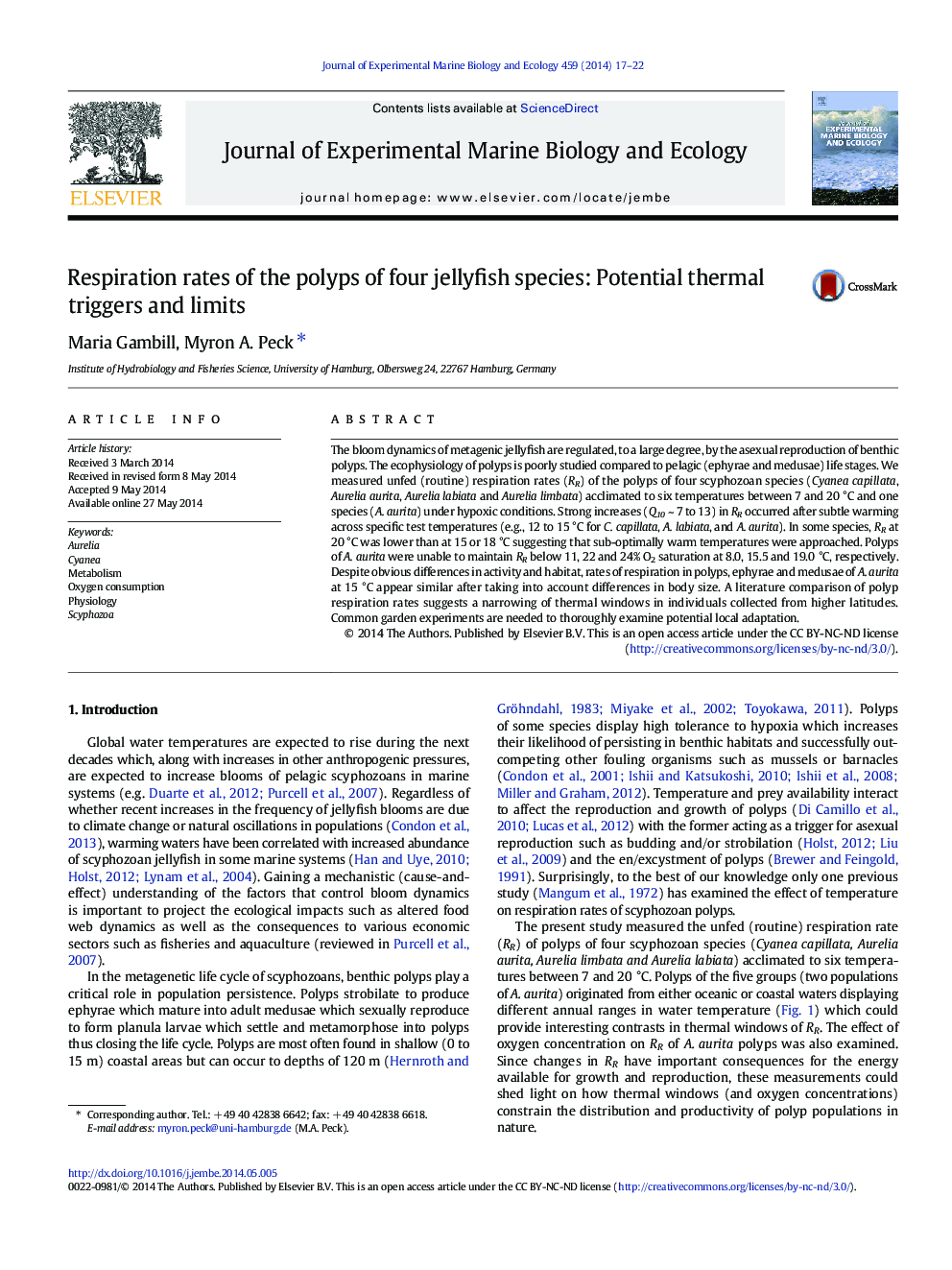| Article ID | Journal | Published Year | Pages | File Type |
|---|---|---|---|---|
| 6304097 | Journal of Experimental Marine Biology and Ecology | 2014 | 6 Pages |
â¢Respiration rates of the polyps of four scyphozoan jellyfish species were measured.â¢Polyp respiration rates exhibited threshold-like changes with warming from 7 to 20 °C.â¢Hypoxia reduced respiration rates of Aurelia aurita polyps at < 25% O2 saturation.â¢Mass-specific respiration rates of polyps, ephyrae and medusa appear to be similar.
The bloom dynamics of metagenic jellyfish are regulated, to a large degree, by the asexual reproduction of benthic polyps. The ecophysiology of polyps is poorly studied compared to pelagic (ephyrae and medusae) life stages. We measured unfed (routine) respiration rates (RR) of the polyps of four scyphozoan species (Cyanea capillata, Aurelia aurita, Aurelia labiata and Aurelia limbata) acclimated to six temperatures between 7 and 20 °C and one species (A. aurita) under hypoxic conditions. Strong increases (Q10 ~ 7 to 13) in RR occurred after subtle warming across specific test temperatures (e.g., 12 to 15 °C for C. capillata, A. labiata, and A. aurita). In some species, RR at 20 °C was lower than at 15 or 18 °C suggesting that sub-optimally warm temperatures were approached. Polyps of A. aurita were unable to maintain RR below 11, 22 and 24% O2 saturation at 8.0, 15.5 and 19.0 °C, respectively. Despite obvious differences in activity and habitat, rates of respiration in polyps, ephyrae and medusae of A. aurita at 15 °C appear similar after taking into account differences in body size. A literature comparison of polyp respiration rates suggests a narrowing of thermal windows in individuals collected from higher latitudes. Common garden experiments are needed to thoroughly examine potential local adaptation.
